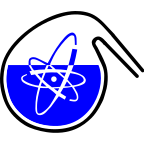Conveners
SEP 4
- Sarah Pepper
- Philippe Moisy (CEA/DEN/DMRC)
Because of their characteristic properties, room temperature ionic liquids (RTILs) are considered to be suitable alternatives to presently used systems in the field of spent fuel reprocessing and decontamination/recycling of materials contaminated with radionuclides. Electrochemical separations from RTILs are highlighted processes in the field and Co is one of the most common contaminants...
Large-scale experiments which have been or are being established in order to answer some fundamental questions of nuclear physics, such as the SuperNEMO experiment, have been recently arising the need for radiopurity measurements on the nBq/g or even sub-nBq/g levels. One of the biggest challenges of these experiments is to reduce the background radiation to minimal values. The isotope source...
Ivanets A.I.1, Shashkova I.L.1, Kitikova N.V.1, Radkevich A.V.2, Sillanpää M.3,4
1Institute of General and Inorganic Chemistry of the National Academy of Sciences of Belarus
2Joint Institute for Power and Nuclear Research – Sosny of the National Academy of Sciences of Belarus
3Laboratory of Green Chemistry, Lappeenranta University of Technology
4Department of Civil and Environmental...
Graphene-based materials (GBMs), such as graphene oxide (GO) have previously been shown to demonstrate exceptional surface sensitivity [1], sorption capacity [2] and selectivity [3] for radionuclides. In addition, it has been found that the selectivity of GO towards certain radionuclides can be further improved by covalent attachment of chelating ligands. Such modifications have been shown to...
Nanoparticles of metal oxides with high specific surface area show high adsorption towards selected radionuclides with fast kinetics. Metallic nanooxides were tested for separation of selected radionuclides (Am-241, Co-60, Cs-137, Sr-90) from simulated spent decontamination solutions containing citric acid. Following materials, prepared by photoinduced synthesis, were tested: NiO, NiO/TiO2 and...
The third phase formation during liquid/liquid extraction has been studied for decades by several authors$^{[1-3]}$ starting in the 50’s. Those studies were focused on the determination of the maximum organic loading that can be reached for a given metal in order to avoid organic phase splitting during the industrial applications such as the PUREX process. More recent studies have been...

